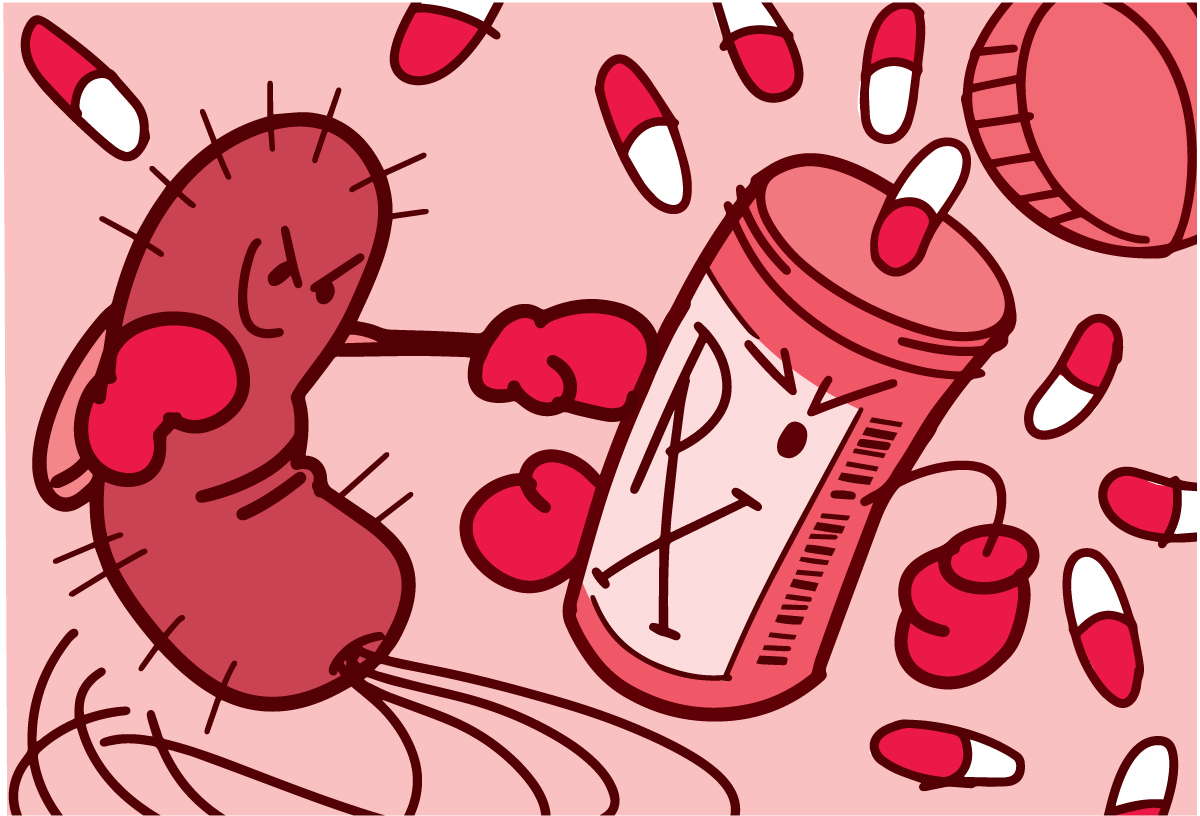Stamping Out Superbugs
A Clear and Present Danger

Bacteria are found nearly everywhere. They’re in your food, recreational waters, and even the air. Some bacteria help keep you healthy. But some can make you very sick.
If you’re healthy, your body may fight off harmful bacteria on its own. But sometimes you need antibiotics. These are drugs that kill bacteria or stop them from growing. They can be critical for preventing or fighting a life-threatening disease. But over time, bacteria can become resistant to drugs that are misused or overused. That means that the drug will no longer stop them.
In the U.S., drug-resistant bacteria infect nearly 3 million people and kill more than 35,000 every year. These “superbugs” have evolved to protect themselves against drugs. This can happen through changes in their Stretches of DNA that define an organism’s characteristics. genes. Sometimes antibiotics don’t stop all the bacteria in an infection. Any bacteria that survive will continue to multiply. They may gain further drug resistance. This makes it even more difficult to control them with antibiotics.
Drug-resistant infections pose many dangers. Bacteria that are resistant to one drug may still be treatable with stronger drugs. But these backup drugs can have more serious side effects. Bacteria that become resistant to too many drugs may be untreatable. Some medical procedures that carry a high risk of infection, like organ transplants, may become more dangerous without effective antibiotics.
Researchers are studying new ways to fight superbugs. Some are working on novel antibiotics. Another strategy uses phages, which are viruses that attack bacteria.
A team led by Dr. Vance Fowler, an infectious disease expert at Duke University, is leading a study of a phage mixture that attacks Pseudomonas aeruginosa bacteria. These bacteria tend to spread in hospitals and other health care settings. They’re often resistant to many antibiotics. Fowler’s team is testing whether phages can be used to treat people with the infection.
They’re also working on a rapid test that can tell the difference between infections caused by bacteria and those caused by viruses. Doctors could use the test to decide how to treat the infection. That could help avoid unnecessary antibiotic prescriptions.
Antibiotics don’t work against viruses. Viruses cause common colds and the flu, but some bacteria can cause similar symptoms. Sometimes, doctors must prescribe antibiotics before they have the test results that confirm a bacterial infection.
“When you have a critically ill patient in front of you, and you are not going to know what you’re treating for several days, you have to make a decision,” Fowler explains. Not starting treatment immediately can lead to life-threatening infections. But giving antibiotics to a patient who doesn’t need them can also cause problems. They can cause side effects and lead to superbugs.
There are ways people can help guard against superbugs. Use antibiotics only when they’re needed. If a doctor doesn’t prescribe antibiotics, don’t pressure them to change their mind. And when you do get antibiotics, take them exactly as prescribed.
The best way to protect yourself and your family against harmful bacteria is to avoid infection in the first place. See the Wise Choices box for tips.
NIH Office of Communications and Public Liaison
Health and Science Publications Branch
Building 31, Room 5B52
Bethesda, MD 20892-2094
Contact Us:
nihnewsinhealth@od.nih.gov
Phone: 301-451-8224
Share Our Materials: Reprint our articles and illustrations in your own publication. Our material is not copyrighted. Please acknowledge NIH News in Health as the source and send us a copy.
For more consumer health news and information, visit health.nih.gov.
For wellness toolkits, visit www.nih.gov/wellnesstoolkits.




